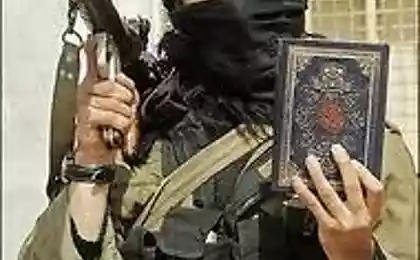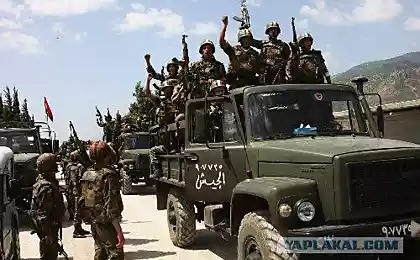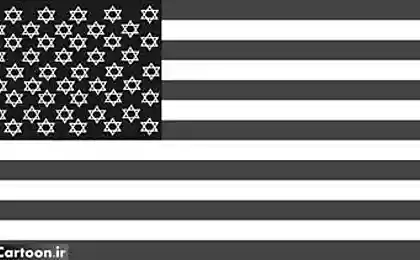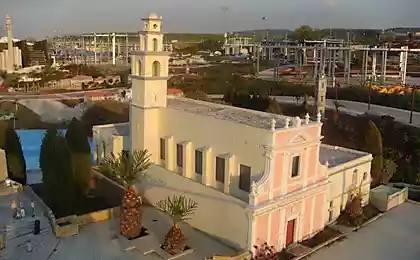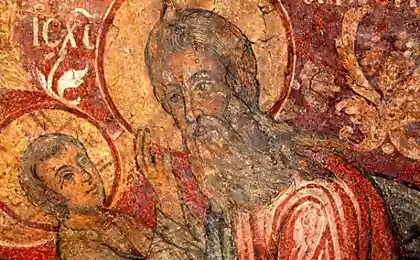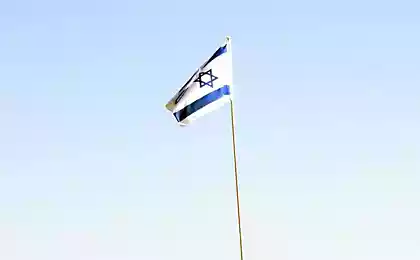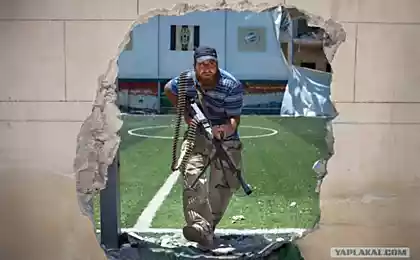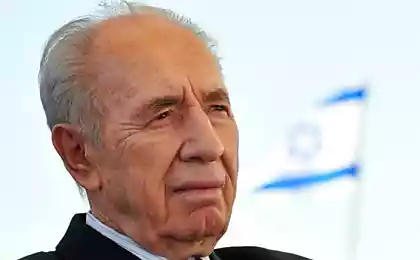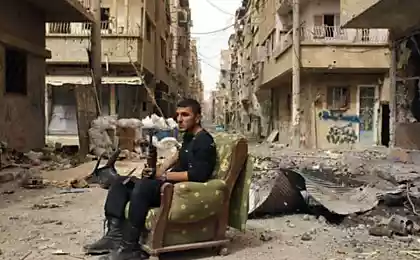748
At the places of battles between Israel and Syria
Located on the border between Syria and Israel, the Golan Heights, is undoubtedly a paradise for fans of military history and the abandonment of many different eras and nations. Moreover, these regions "profitable" are different from many other places in the world has known for a long time the crowds. Many minefields laid here for the first time has the French in the 20s, then the Syrians in 1948-1967, followed by Israel since 1967 - all of them keep the authenticity and the relative inaccessibility of many interesting objects. Narrow dirt roads on all sides surrounded by barbed wire with signs "Mines", will lead you from the main roads into the interior landscape of volcanic hills, abandoned bunkers destroyed tanks and dead Circassian villages. In many places, failed to turn the machine back a little to the side, it may be your last life. The feeling that you were in the midst of an atomic explosion.
14 ph via puerrtto
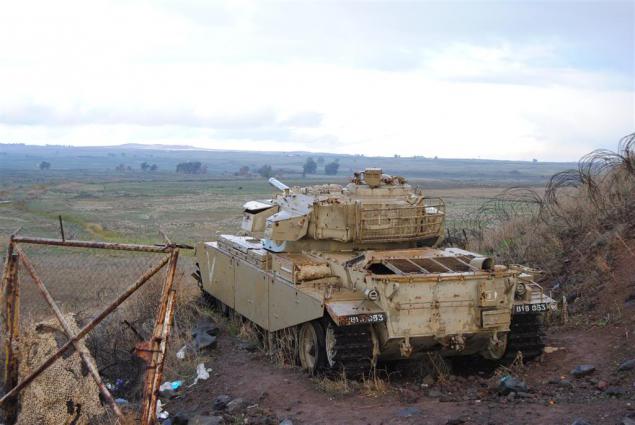
Tel Al-Salem
This is one of the most famous Israeli fortifications in the Golan Heights. He is known primarily by the fact that we do know that just happened here in the last war with Syria, and particularly from 6 to 8 October 1973.
If it is very short, the layout was that a few hours before the beginning of the Syrian attack, there was not a soul. Below - in view of the strengthening of Tel al-Saki, from all sides surrounded by minefields.
Surprisingly, in a state of war with Syria, just a few hours before the start of a large-scale enemy attack, the Israelis did not have a single soldier on the defensive line in this area. Dozens of bunkers, located a few kilometers from the Syrian positions were in the status of "conservation in case of war." So, October 6, 1973, at noon, in the strengthening of this small group of soldiers arrived in five people in the armored personnel carrier Zelda, here at this
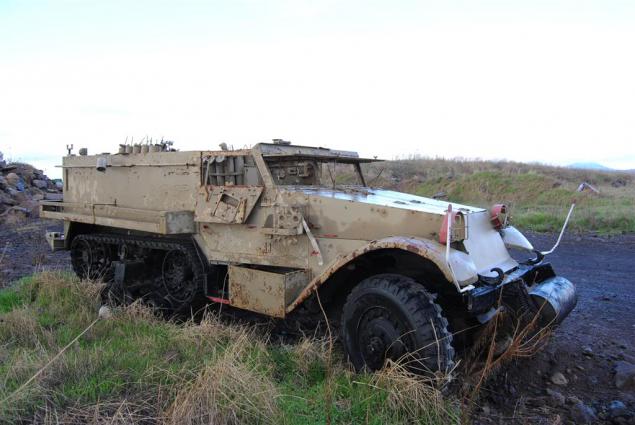
The soldiers barely engaged in bringing bin in order of how, exactly at 14:00, the Syrian heavy artillery began shelling Israeli positions. The soldiers took refuge in the depths of the bunker, unable to do anything, the only goal was simply to somehow survive. Traces of artillery impacts are visible today: all around the craters from explosions and torn up most of the bunker. The soldiers managed to hold out until the night came when a break in the artillery barrage, at the same time to the bunker burst reinforcement in the form of six Centurion tanks and dozens of paratroopers, armed with heavy machine guns and anti-tank grenade launchers. However, the call came, "reinforcements", it would be too optimistic, because it had to retreat to the positions of other soldiers, partly wounded, who had with him a very limited amount of ammunition and tanks remained almost without fuel and ammunition.

04
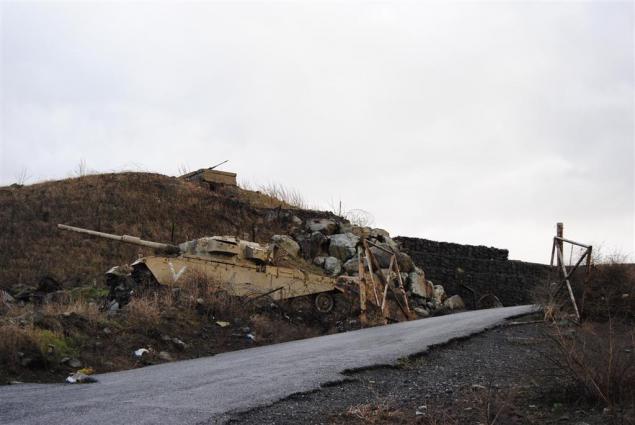
05

06
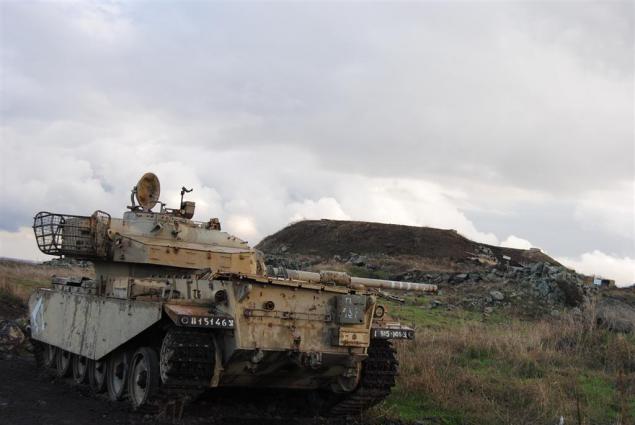
07
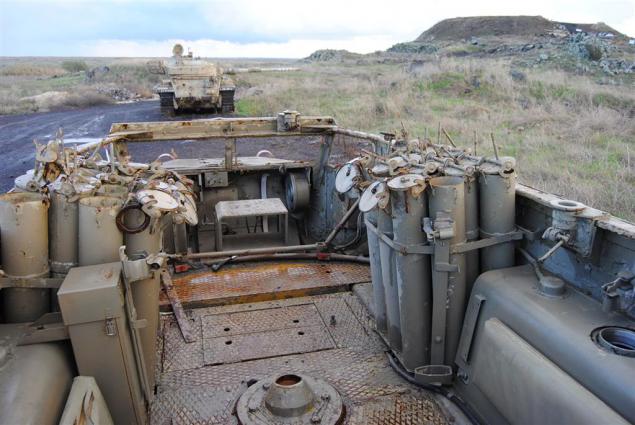
08
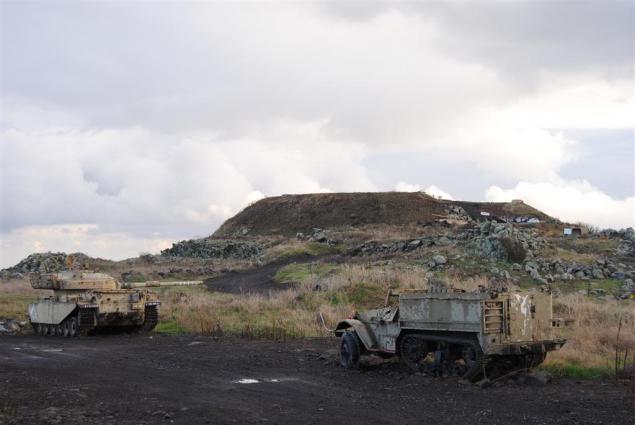
09

From early morning, October 7th, Syrian army launched an offensive forces 132 Tank Division. Just one hour after the start of the offensive, more than three hundred (!) Syrian T-55 tanks and armored vehicles BTR-152 with the infantry, were already close to the Tel al-Saqi. For many tanks stretched Zil-130 trucks with ammunition and Ural 375 installations Castle. Miraculously, Israeli soldiers failed to deter the Syrians the whole day, and even knocked out a few dozen pieces of equipment of the enemy. By the way, lined Syrian BTR-152 Soviet-made is there to this day -
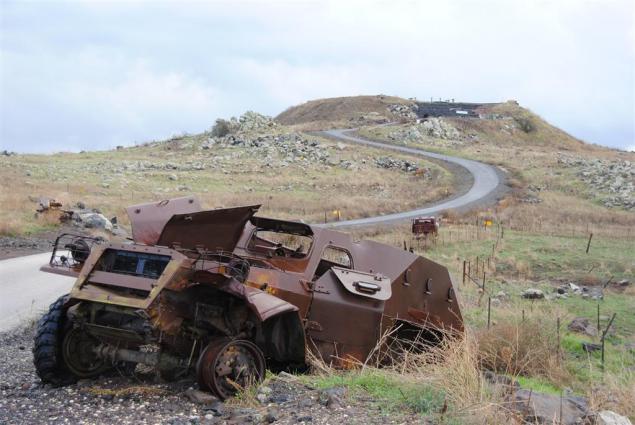
Here you can see the Syrian Zil-130 -
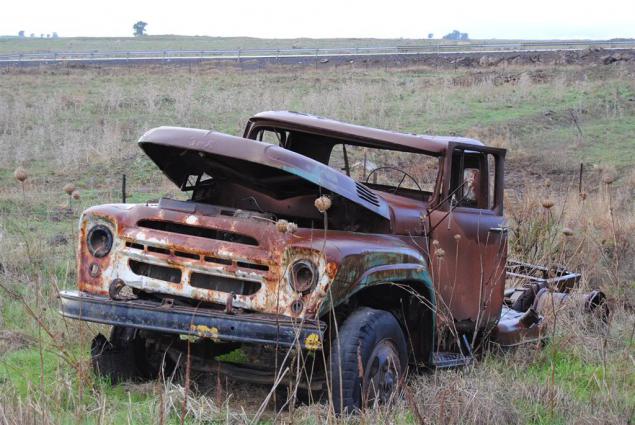
If you drive a little further, just five kilometers north of UAZ on the pole, it will be the right ridge called Akesh, on top of which will be ... yes, you guessed it, the next silos and tanks -
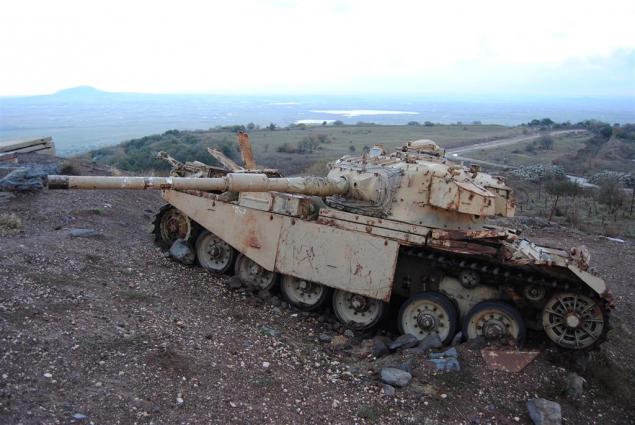
From the top of the mountain overlooking the Akesh Syria and Circassian village of Bir Ajam, surrounding close to the border with Israel. There - a demilitarized zone, and the actual position of the Syrian army located on a hill rising above the horizon
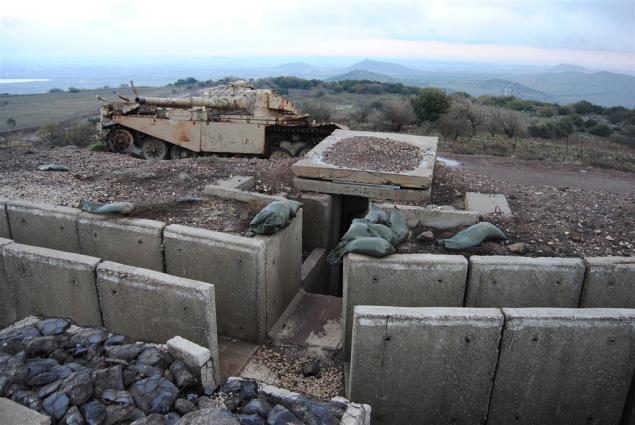
14

Source:
14 ph via puerrtto

Tel Al-Salem
This is one of the most famous Israeli fortifications in the Golan Heights. He is known primarily by the fact that we do know that just happened here in the last war with Syria, and particularly from 6 to 8 October 1973.
If it is very short, the layout was that a few hours before the beginning of the Syrian attack, there was not a soul. Below - in view of the strengthening of Tel al-Saki, from all sides surrounded by minefields.
Surprisingly, in a state of war with Syria, just a few hours before the start of a large-scale enemy attack, the Israelis did not have a single soldier on the defensive line in this area. Dozens of bunkers, located a few kilometers from the Syrian positions were in the status of "conservation in case of war." So, October 6, 1973, at noon, in the strengthening of this small group of soldiers arrived in five people in the armored personnel carrier Zelda, here at this

The soldiers barely engaged in bringing bin in order of how, exactly at 14:00, the Syrian heavy artillery began shelling Israeli positions. The soldiers took refuge in the depths of the bunker, unable to do anything, the only goal was simply to somehow survive. Traces of artillery impacts are visible today: all around the craters from explosions and torn up most of the bunker. The soldiers managed to hold out until the night came when a break in the artillery barrage, at the same time to the bunker burst reinforcement in the form of six Centurion tanks and dozens of paratroopers, armed with heavy machine guns and anti-tank grenade launchers. However, the call came, "reinforcements", it would be too optimistic, because it had to retreat to the positions of other soldiers, partly wounded, who had with him a very limited amount of ammunition and tanks remained almost without fuel and ammunition.

04

05

06

07

08

09

From early morning, October 7th, Syrian army launched an offensive forces 132 Tank Division. Just one hour after the start of the offensive, more than three hundred (!) Syrian T-55 tanks and armored vehicles BTR-152 with the infantry, were already close to the Tel al-Saqi. For many tanks stretched Zil-130 trucks with ammunition and Ural 375 installations Castle. Miraculously, Israeli soldiers failed to deter the Syrians the whole day, and even knocked out a few dozen pieces of equipment of the enemy. By the way, lined Syrian BTR-152 Soviet-made is there to this day -

Here you can see the Syrian Zil-130 -

If you drive a little further, just five kilometers north of UAZ on the pole, it will be the right ridge called Akesh, on top of which will be ... yes, you guessed it, the next silos and tanks -

From the top of the mountain overlooking the Akesh Syria and Circassian village of Bir Ajam, surrounding close to the border with Israel. There - a demilitarized zone, and the actual position of the Syrian army located on a hill rising above the horizon

14

Source:
